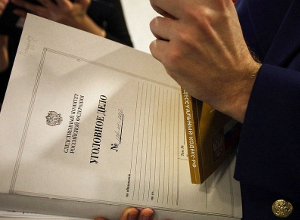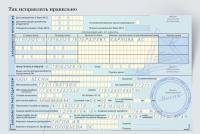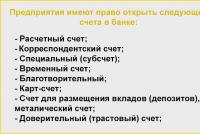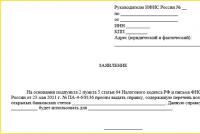Types of liability for disclosure of trade secrets
This concept means special treatment handling information entered in a specific organization. This is a system of measures aimed at maintaining the confidentiality of certain information.
At the same time, such a regime allows a legal entity to avoid certain expenses or increase income, maintain or improve its position in the market.
What falls into the category
This category may include various information:
- information about the economic condition of the company (presence of profits or losses);
- information about utility models, know-how, industrial designs that are used in the organization;
- information about the company’s partners: clients, counterparties, intermediaries and other persons conducting business relations with it;
- information about the management system installed in the organization;
- information about the company’s property, its value, the presence of various types of debt;
- other information that the person wishes to hide.
Certain information cannot be placed under the trade secret regime. This:
- information about the founders of the organization, its leader, as well as information contained in;
- data on the number of employees, their working conditions and remuneration system;
- information about violations of the law and cases of prosecution;
- other information specified in Article 5 of the Federal Law “On Trade Secrets”.
A trade secret requires a special system of information protection. It includes a number of organizational and technical measures.
- Employees of the organization who were entrusted with information as part of the performance of their duties.
- Representatives of counterparty companies who have signed a non-disclosure agreement on certain information. Partnerships between legal entities often involve the exchange of data related to intellectual property.
- Persons who unlawfully acquired hidden information. For example, as a result of unauthorized access to equipment, computer technology, documentation.
 The person must be notified that the information he has received is a trade secret. To achieve this, employees working with data carriers are familiarized with confidentiality measures. A separate internal document is being developed for this purpose.
The person must be notified that the information he has received is a trade secret. To achieve this, employees working with data carriers are familiarized with confidentiality measures. A separate internal document is being developed for this purpose.
The owner must take measures aimed at limiting access to confidential information. For example, documents must have the appropriate stamp. They must be stored in a place with limited access (in a safe or locked room).
Legal norms
Trade secrets are largely regulated by the internal acts of the organization where such a regime is established. The basis for the legal regulation of this institution is No. 98-FZ of July 29, 2004 “On Trade Secrets.” This act contains the main categories of data that may or may not be kept secret.
Liability measures for the disclosure of information classified as a trade secret are established in the Code of Administrative Offenses, the Criminal Code of the Russian Federation, and the Civil Code of the Russian Federation.
Procedure for punishment of proof of guilt
An employee's responsibility for disclosing a trade secret occurs only if there is guilt. The person must be aware that the information is a trade secret. And also to realize that the act being committed is contrary to the procedure established for handling such information.
Today, data stored in electronic systems is increasingly used as evidence of guilt. This is information about the time a particular employee worked on the computer, his requests, the documents he opened, etc.
Measures and types of responsibility
For the violator, several penalties may occur simultaneously. Thus, the commission of a crime will be grounds for the dismissal of the perpetrator as part of the imposition of a disciplinary sanction. Also, the employee will be brought to administrative or criminal liability, depending on the circumstances of the act.
Disciplinary
Measures of such responsibility are expressed in dismissal or reprimand. It occurs only in the case where the employee has undertaken an obligation to keep a trade secret and has violated it.

Civil law
Disclosure of confidential information is associated with damage to its owner. The injured person may receive in court two types of compensation:
- actual damage– reduction of property and expenses of a person to restore the original state;
- lost profit– profit that was not obtained solely due to illegal actions.
It should be noted that employees who disclose trade secrets cannot be brought to civil liability. For relations with the employer, only the norms of labor legislation are applied, where measures of material liability are established.
Administrative
 In the Code of Administrative Offenses of the Russian Federation, it is worth paying attention to, which establishes the responsibility of a person for the disclosure of any data, access to which has been limited in accordance with the law. Trade secrets also fall into this category.
In the Code of Administrative Offenses of the Russian Federation, it is worth paying attention to, which establishes the responsibility of a person for the disclosure of any data, access to which has been limited in accordance with the law. Trade secrets also fall into this category.
Measure of responsibility - fine from 500 to 1000 rubles. A more stringent sanction has been established for officials - from 4000 to 5000 rubles.
Only those persons to whom the trade secret became known in connection with the performance of their labor function or professional duties can be prosecuted under this article.
Criminal
In the Criminal Code of the Russian Federation, liability for violation of the trade secret regime is established in Article 183. Part 1 provides for the unlawful receipt of information by a citizen who did not have access to media containing information constituting a trade secret.
Part 2 regulates cases where a person legally obtained information, but used it illegally and without the permission of the owner. Part 3 prohibits the disclosure of information committed for personal gain or causing major damage. Part 4 applies if there are serious consequences.
The perpetrators may be subject to the following types of punishments:
- a fine of up to 1.5 million rubles (or in the amount of earnings for a period of up to 3 years);
- forced labor for up to 3 years;
- imprisonment for up to 7 years;
- deprivation of the right to hold positions or engage in activities related to keeping trade secrets.
Features of initiating a criminal case
When initiating a case, it is necessary to find out whether the organization has a provision regulating the regime of trade secrets. It is also necessary to find out whether the citizen was obliged to follow the rules established by such a regime.
Let's give an example. Chernov O.A. was hired by an insurance organization under a contract to receive documents on the occurrence of insured events. The contractor was given full access to client databases installed on the work computer. At the same time, Chernov did not sign any additional documents regarding the storage of trade secrets.

The data was used by the citizen for personal gain. The case was refused. The insurance company was recovering damages in a civil lawsuit.
After identifying the object and subject at the stage of initiating a case, the investigator is faced with the task of establishing a connection between the actions of a specific person and the violation of the trade secret regime.
The most important circumstances are the exact time and place of the crime. Such data makes it possible to establish which of the employees used information carriers, illegally copied information, or transmitted it via electronic communication channels.
If many company employees had access to data during the working day, it will be extremely difficult to identify a specific culprit.
 Let's give another example. Chugai A.A. worked in the claims settlement department of an insurance company. He had access to confidential information; in accordance with the terms of the employment contract, he had to comply with the trade secret regime. At the same time, information from the database Chugai A.A. used for personal gain: he printed out documents submitted by clients and passed them on to third parties.
Let's give another example. Chugai A.A. worked in the claims settlement department of an insurance company. He had access to confidential information; in accordance with the terms of the employment contract, he had to comply with the trade secret regime. At the same time, information from the database Chugai A.A. used for personal gain: he printed out documents submitted by clients and passed them on to third parties.
Due to the fact that entries into the database were recorded, the investigation was able to establish the number of cases of unauthorized use of hidden information.
In the end, everything depends entirely on how the work with confidential data is structured in a particular company. If each employee has his own password to enter the database, information about the actions performed on the computer is recorded, then it will not be difficult to identify the culprit.
Court decisions
Criminal justice is based on the principle of the presumption of innocence. Therefore, in such a case, the verdict depends entirely on how accurately the person who violated his obligations in the use of information classified as a trade secret is identified.
During the process, the prosecutor must prove that an employee of the organization had access to confidential information, was obliged to maintain a trade secret regime, understood the nature of the data available to him, and used it without the owner’s consent.
Most often, legal entities cannot adequately ensure data security. Personal computers have access to the Internet, many employees know access passwords, employees use their own storage media (flash drives, disks, etc.). In such a situation, the verdict will be acquittal.
Advice from a lawyer regarding the disclosure of trade secrets is in this video.






